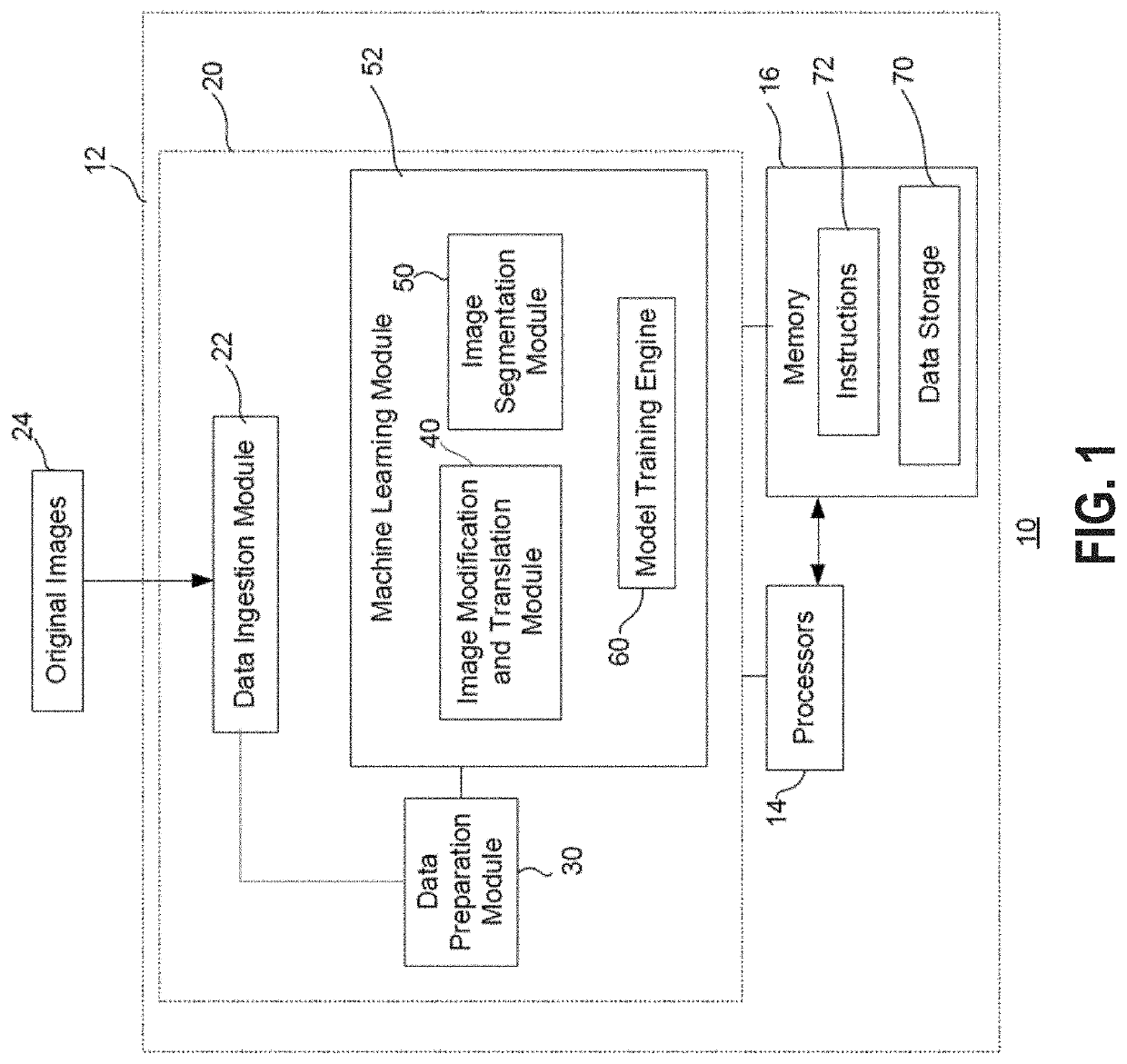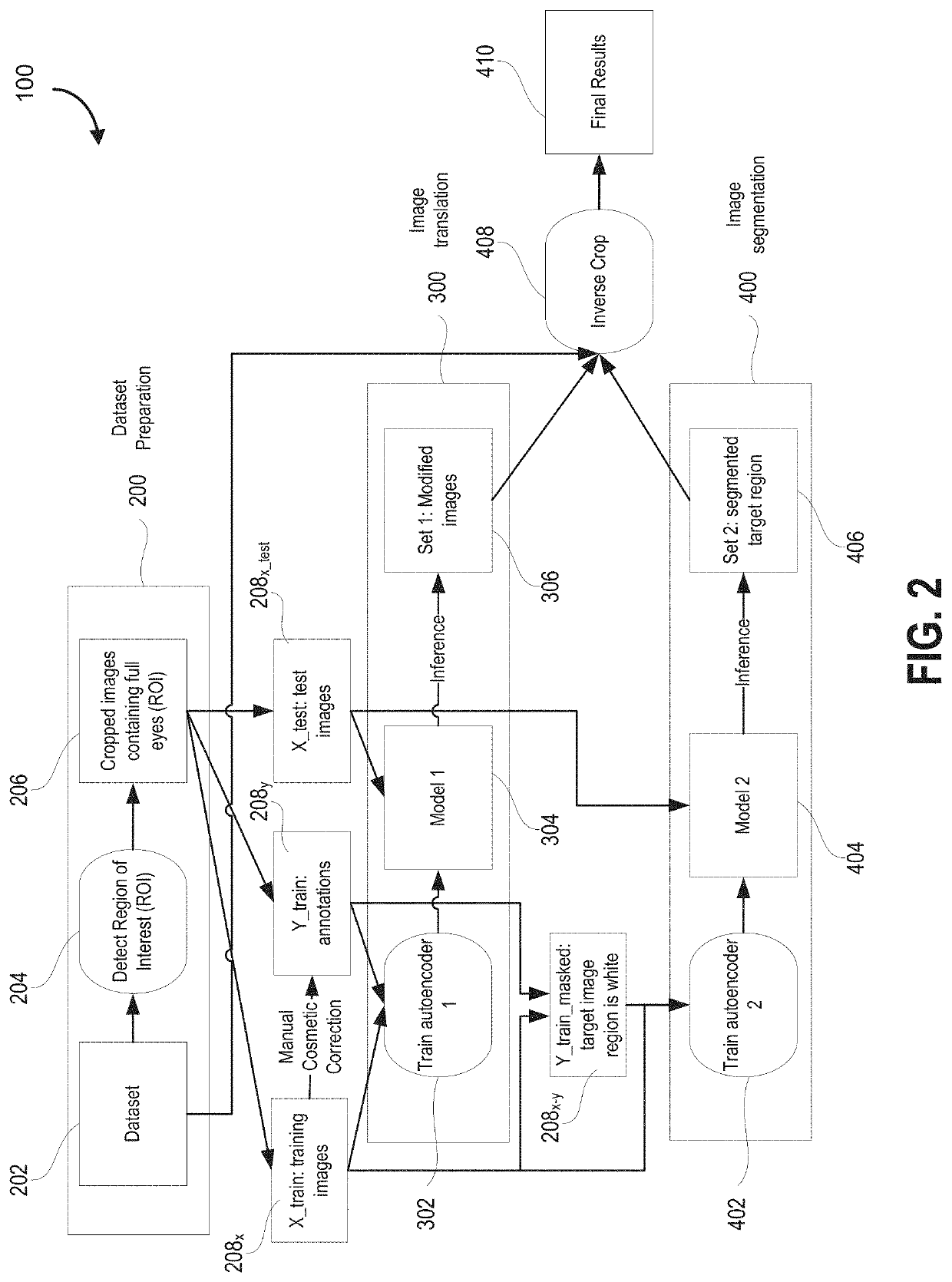Method and system for image processing
a technology of image processing and image rig, applied in the field of image processing, can solve the problems of underlying technology for de-aging often requiring expensive and unwieldy camera rigs, tracking markers, motion capture technology or actors, and computationally intensive visual effects
- Summary
- Abstract
- Description
- Claims
- Application Information
AI Technical Summary
Benefits of technology
Problems solved by technology
Method used
Image
Examples
Embodiment Construction
[0085]In face editing tasks in high-definition videos, for example, a crucial aspect is to match the facial edits closely with client specifications, and to keep the local image features consistent within its spatial and temporal neighbourhood.
[0086]A glossary of terms which may be found within this description:
[0087]Annotated (Target) images: Images modified by professional artists as per the clients' requirements
[0088]Dataset: Collection of original images provided by the client (source images) as well as artist-modified images (target images)
[0089]Degrained images: Images that have the noise removed by artists
[0090]Episode: Collection of shots typically ordered into a show's film segment
[0091]EXR file type: High dynamic range raster image file type. EXR files use a non-linear colour space and each channel is 32-bit. In order to view the image and train the network, it is converted to linear RGB space. Note, images typically used are of shape [2160, 3840, 3] in pixel space.
[0092]F...
PUM
 Login to View More
Login to View More Abstract
Description
Claims
Application Information
 Login to View More
Login to View More - R&D
- Intellectual Property
- Life Sciences
- Materials
- Tech Scout
- Unparalleled Data Quality
- Higher Quality Content
- 60% Fewer Hallucinations
Browse by: Latest US Patents, China's latest patents, Technical Efficacy Thesaurus, Application Domain, Technology Topic, Popular Technical Reports.
© 2025 PatSnap. All rights reserved.Legal|Privacy policy|Modern Slavery Act Transparency Statement|Sitemap|About US| Contact US: help@patsnap.com



